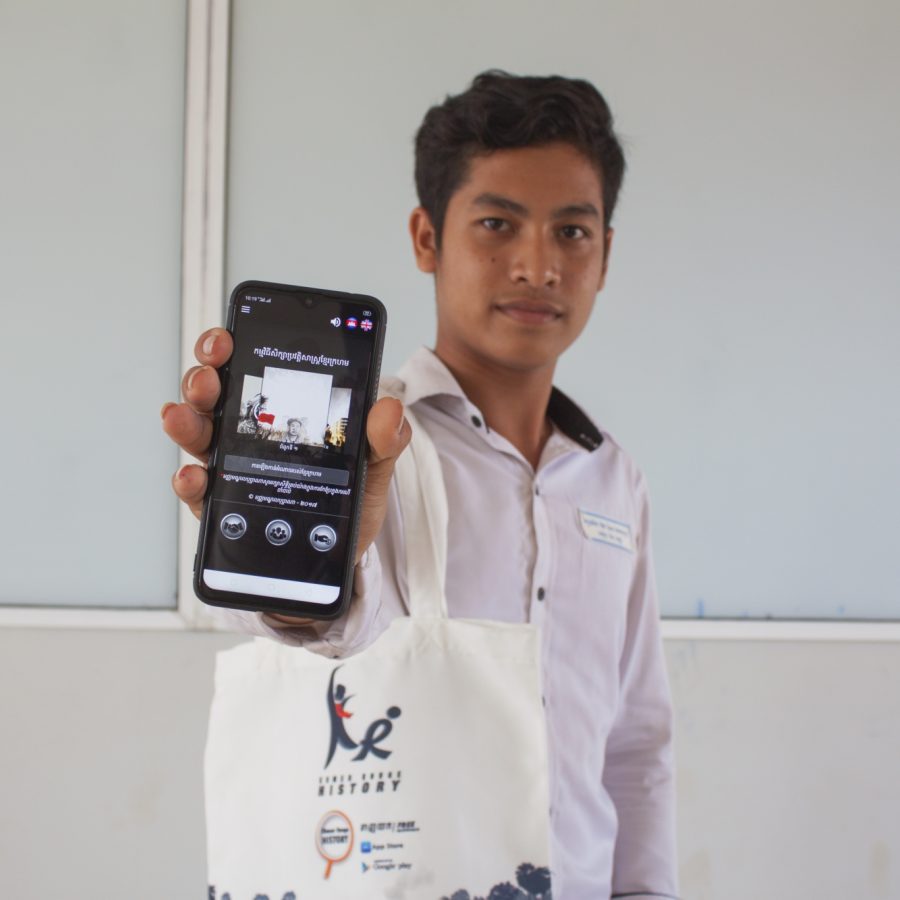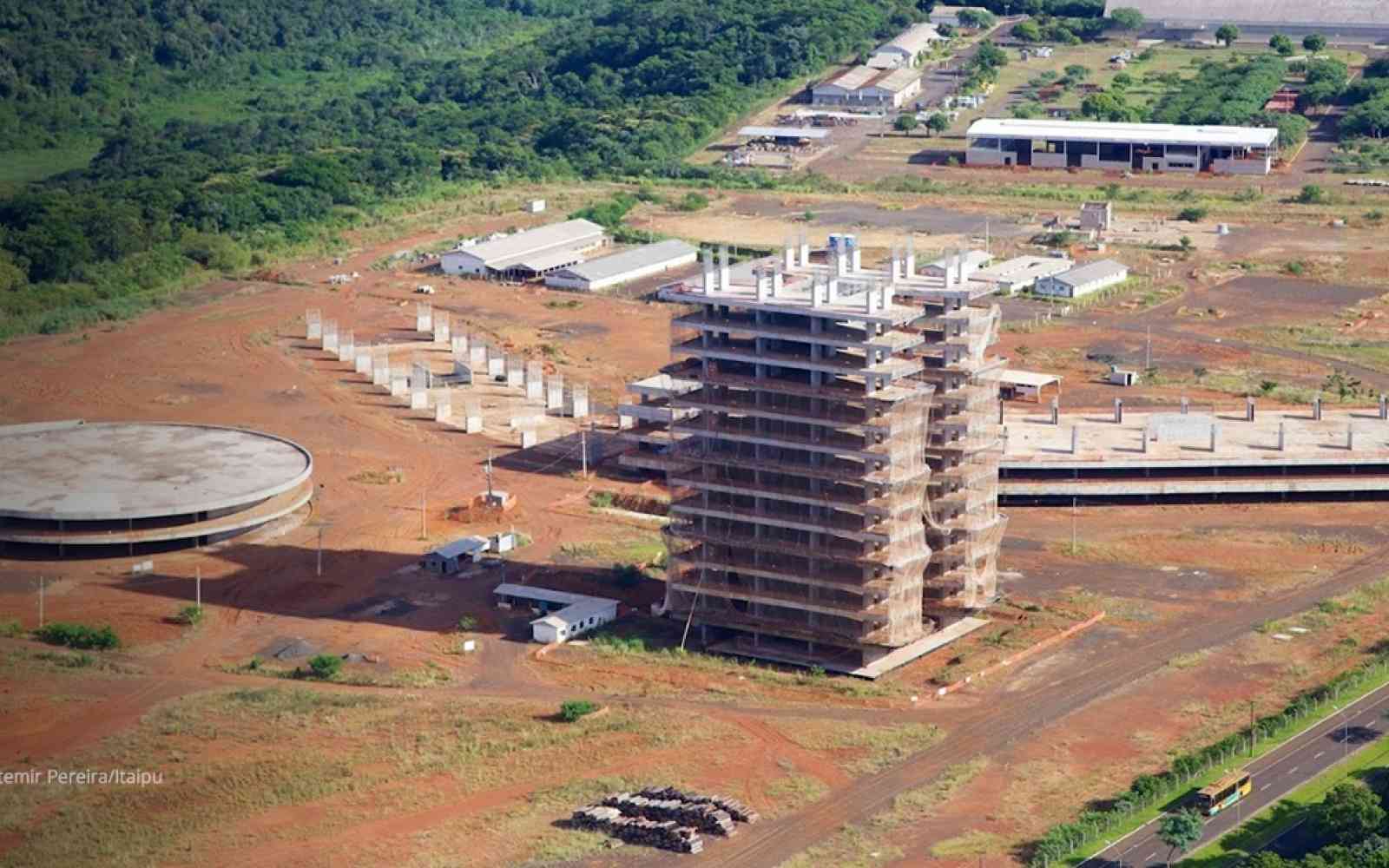The United Nations Office for Project Services (UNOPS)

Promoting lasting peace through innovative learning
In Cambodia, an interactive smartphone app is helping educate students about the country’s devastating history under the Khmer Rouge.
It is now more than 40 years since the Khmer Rouge’s rule over Cambodia came to an end. Between 1975 and 1979, the Communist Party of Kampuchea (CPK), as they were officially known, led a brutal totalitarian regime that oversaw the mass murder of up to an estimated two million people - almost a quarter of the country’s population at the time. Many of the victims dying by execution, torture, starvation, untreated diseases or as a result of being overworked in the regime’s many hard-labour camps.
It is a period that will forever echo in Cambodia’s history, but one that society struggles to deal with to this day. This has led to a lack of willingness to openly discuss this time in society, which in turn has resulted in a culture of collective silence and a legacy of limited local documentation and resources available to those seeking to learn about this devastating period in the country’s history.
In recent years, international, governmental, and non-governmental institutions have been working to help address this – to help heal the trauma experienced by survivors, and to help ensure that history never repeats itself.
However, with 70 per cent of today’s population under the age 30 and with a society that is still coming to terms with its dark past, reaching young Cambodians has proven to be a significant challenge.
To respond to this, the Bophana Audiovisual Resource Center, a charity based in Phnom Penh dedicated to curating film, television, photography and sound archives on Cambodia from all around the world, was hired to develop an educational smartphone application on the history of Cambodia under the Khmer Rouge.

The application, called ‘Khmer Rouge History’, was developed under the programme ‘Awareness and education on Khmer Rouge history programme – supportive educational resource development’, funded by the European Union and the New Zealand-based Rei Foundation, and implemented by UNOPS.

The objective of our project is to preserve national memory.
“[It will help] educate the youth on Khmer Rouge history as well as to raise awareness about justice, human rights and peace, hosting an exchange between Khmer Rouge survivors and the young people through family and intergenerational dialogue,” he continues.
During the development of the app, Bophana invited a wide-array of specialists and experts to work on what was a sensitive project. This collaboration brought together writers, archivists, audio-visual technicians, graphic designers and information technology experts to help produce films, documents, audio recordings and photographs – all under the supervision of Cambodian and international experts on the Khmer Rouge.
Available in both the Khmer-language and in English, as of December 2019, the app has been downloaded more than 70,000 times. The majority of these downloads have come from Cambodia, but downloads have also come from users in Canada, France, Japan, South Korea and the United States.
Once the application was successfully completed, Bophana then began an outreach campaign, travelling to schools across the country to engage students with the application and help teach them about their nation’s history. More than 450 teachers in 270 high schools in 26 provinces were trained to use the app and associated materials.




The app was not only about teaching students with existing information, but also provided an opportunity for them to learn how to gather new information that could then be added to the application’s archive. With guidance and assistance from the project team, the students learned interview techniques, how to introduce, open, and close interviews, and the technical details and protocols to record interviews while preserving and respecting interviewees’ right to privacy.
Learning the history of the Khmer Rouge through the app is very good for today’s youth, because now most young people have their own smartphones.

“We just download this app, so we can study the history of the Khmer Rouge, and know what the people did at that time, and it even has photos, paintings, photos of clay sculptures, as well as questions and answers,” explains Mat Nosnei, a student at Samdech Ov Samdech Mae High School, Ratanakiri province.
This approach proved to be successful with students who were able to gain useful skills that not only enhanced their competency in conducting oral history, but also gave them essential transferable skills that can be used in their future professional and personal lives.
Teachers agree that the application has been a huge success. Leng Savuth is the principal of Mesang High School in Prey Veng province. He believes that learning history through digital resources will help students to better absorb and remember the information that is presented, than they might through traditional books and documents.
“This app has helped a lot of students,” he explains. “We don’t need to spend much time looking for documents. We can just use our smart phone and it is easy to use. It allows us to remember more things than in a book. We can hear the audios and see the pictures.”
As well as this, Bophana visited villages to introduce more people to the app and how it is helping young students learn about Cambodia’s past. Here, students were invited to use their new skills and interview locals who experienced life under the Khmer Rouge.

This application will help Cambodians. Especially the young generations, to remember their country’s history, learn from it and understand how precious are democracy, respect for human rights and the rule of law, from their historic past.
In Phnom Penh, Bophana were able to renovate their center to enhance the accessibility of information and documents they have available on the Khmer Rouge - allowing anyone to visit them and engage with their archive.
Reflecting back on the success of the project, Sandrine Capelle-Manuel, UNOPS Director for Cambodia, Lao PDR, Vietnam and the Philippines, explains why learning about history is so important to a nation and its people.
“Knowing its history and culture are fundamental in all development processes in any country,” she says.
“In Cambodia, they are also essential in ensuring lasting peace and achieving lasting national reconciliation. And the young population must be at the heart of this process.
“To reach them, innovative methods of raising awareness, teaching and disseminating information are necessary. And this is what the app-learning on the history of the Khmer Rouge offers today – free online access to validated and standardized information that helps educate the population about the tragic events of the past, to help build a more stable and peaceful future.”
About the project
The ‘Khmer Rouge History’ application was developed by Phnom Penhbased Bophana Audiovisual Resource Center. – which is dedicated to acquiring film, television, photography and sound archives about Cambodia from all around the world. The project is part of the ‘Awareness and education on Khmer Rouge history programme – Supportive educational resource development’ programme, funded by the European Union and the Rei Foundation, and implemented by UNOPS.
The project began in 2016 to find a digital solution to help educate and engage Cambodian youth on the history of the Khmer Rouge. The web-based application relies on films, documents, audio recordings, and photographs created and curated by a team of skilled specialists and supervised by expert Cambodian and international historians.
As well as developing the app, the project team ran an outreach campaign, visiting schools in 26 provinces.












